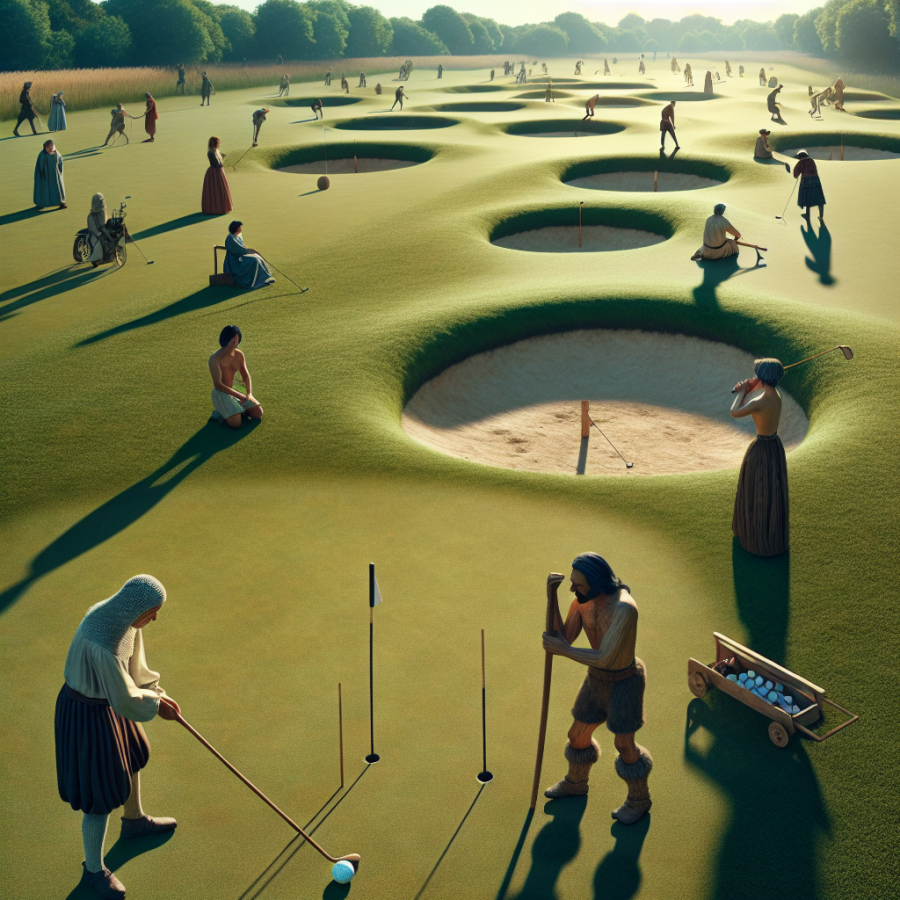Unraveling History: The Mysterious Beginnings of Golf
Exploring the ancient roots of golf requires a bit of detective work, sifting through records and piecing together a jigsaw puzzle of evidence. It is well acknowledged that the game of golf as we know it today—an 18-hole spectacle—grew in popularity in Scotland during the 15th century. However, the true origins of golf, including who invented the game and when, are shrouded in mystery and the subject of much debate among scholars and enthusiasts alike.
First, it's important to understand that primitive games involving striking a round object with a stick have been part of human culture for centuries. These games can be traced back to the Romans, who played a game called paganica, in which participants used a bent stick to hit a leather ball. Similarly, the Chinese game of chuiwan, which required players to knock a ball into a hole using a stick, was documented as early as the Song Dynasty (960–1279). Despite these ancient manifestations, are they early versions of golf or simply similar games using comparable equipment? Unfortunately, the verdict is still out.
However, evidence suggesting the existence of a golf-like game in the Netherlands during the 13th century might offer greater clues. This game, known as "kolf," was popular in the region and involved striking a ball with a stick towards a specific target. There is contention regarding the nation’s claim to be the cradle of golf, though, as the game of kolf was usually played on ice and bore some key differences with today’s golf.
The strongest claims to golf's invention, however, lie in Scotland. There are records dating from as early as 1457, when golf was banned by the Scottish King James II, labeling it a distraction from military training. The game was so popular that the ban was reinforced in 1471 and 1491, further highlighting its growing presence in Scottish society.
As years passed, the game that was loved and played in Scotland - despite facing bans - began to evolve and take on the structure we see today. It was in the Scottish town of St. Andrews where the 18-hole golf course was established in 1764. The rules of the game were also formalised at Leith in 1744, with this location going on to host the world's first golf tournament the same year.
Read also:
The Art and Grace of Ice Skating: Exploring its History and Techniques
From Stick and Ball to Green Jacket: The Evolution of Golf over the Centuries
The origins of golf can be traced back to the 15th century in Scotland, where it was played as a stick and ball game. At this time, golf wasn't the sport we know today with manicured greens, advanced clubs, and millions watching major tournaments worldwide. It was a simple game played with a stick and a ball, with the objective to hit the ball into a hole.
The 15th-century version of golf bore minimal resemblance to modern golf. The Dutch subject paintings from this era depict players striking a feather-stuffed ball with club-like tree branches. The Scottish then adopted this game, tweaking it by introducing a hole as the target. This variation of the game became increasingly popular among the locals despite being a far cry from the polished version played today.
In the early 16th century, golf was banned by King James II of Scotland, as he believed it distracted young men from learning archery, which was a vital military skill at the time. The ban was lifted in 1502 when a peace treaty was signed between Scotland and England. The Scottish Royal Family, particularly King James IV, was known to be fans of this game, lending it legitimacy and popularity.
Navigating through the timeline, the mention of golf in the Act of the Scottish Parliament was in 1457, affirming its existence and popularity even during those ancient times. And till the 19th century, golf was primarily a sport for the elite and the royals.
However, the modern game of golf as we know it gradually took shape in the 19th Century, with the establishment of the first standardized rules and golf courses. The first 18-hole golf course, The Old Course at St Andrews in Scotland, was established around 1764. The 18-hole round was later standardized in 1858, and by the late 19th Century, golf had migrated across the Atlantic to the United States.
During the 20th century, golf's popularity exploded, particularly in the United States, owing in part to rising living standards and enhancements in technology. Golf clubs evolved from wooden to steel shafts, and later to graphite and titanium, while golf balls also evolved from feathers to today's multilayer balls. With the evolution of television and media, golf's popularity spread globally, turning it from a game of stick and ball to a globally recognized professional sport.
Another significant evolution of golf has been in the formats and the championships.




